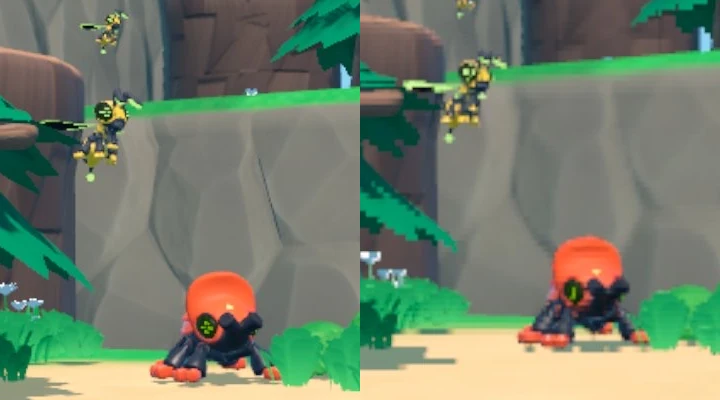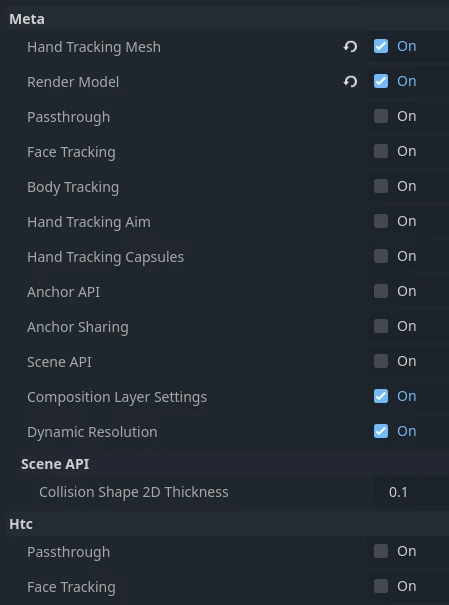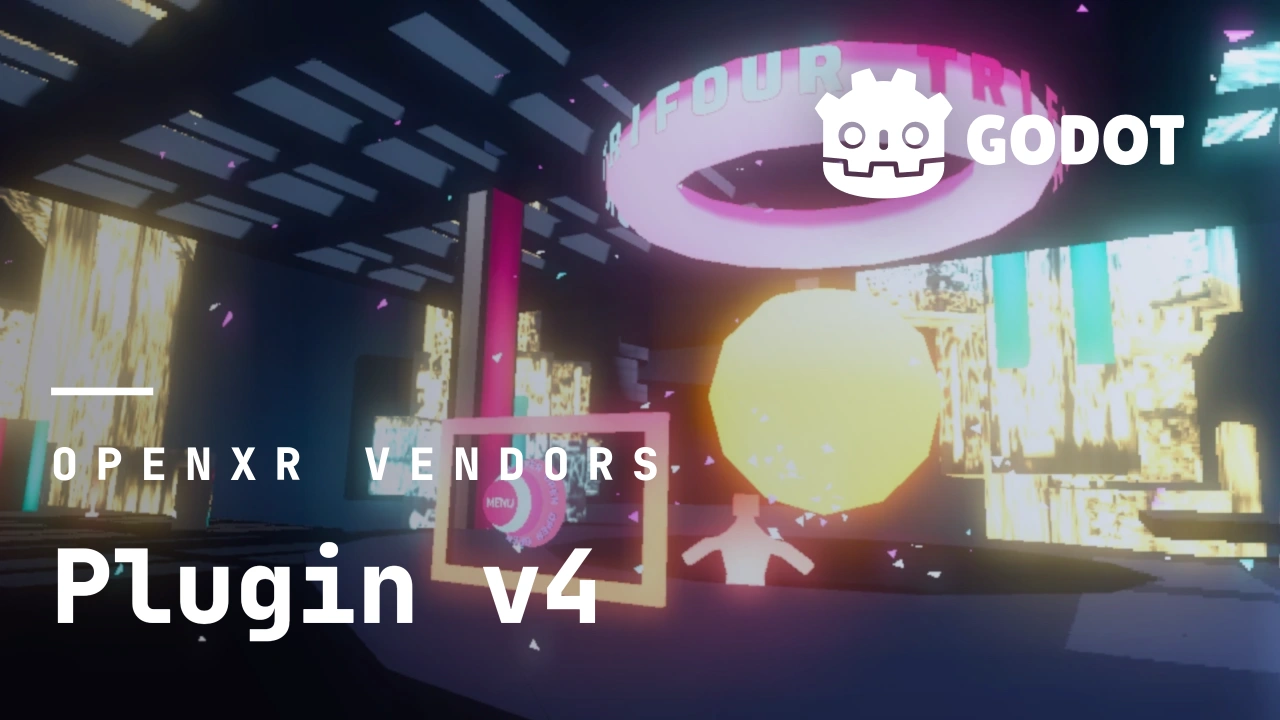OpenXR support has been built into Godot since the release of Godot 4.0. However, the OpenXR Vendors plugin (maintained by Godot’s XR team) includes extensions to OpenXR created by hardware vendors (e.g. Meta, Pico, HTC, etc.), which we’ve chosen to keep outside of Godot itself.
We are happy to announce a new major release of the OpenXR Vendors plugin, which includes some exciting new features!
Version 4.0.0
The 4.0.0 version was actually released right before GodotCon Boston, but with all the excitement around the event (including our GodotCon presentation), we never managed to find a time to properly announce it.
Here’s some of the key features in the transition from v3 to v4!
Switch to Khronos loader
Aside from OpenXR vendor extensions, the plugin has historically also included vendor-specific OpenXR loaders for Android. While OpenXR now has a standard loader for Android (which we call “the Khronos loader”), this wasn’t the case when standalone Android headsets first hit the market, and so a number of vendors created their own proprietary loaders.
However, starting with version 4.0.0, we are only including the Khronos loader, which is supported on all the Android headsets supported by the plugin.
This is a step towards eventually including support for the Khronos loader in Godot itself, which will make it possible to export to Android without requiring the plugin at all! That is something that Bastiaan Olij has started working on, and we hope to merge for Godot 4.6.
Dynamic Resolution
While hitting your FPS target is important for flat screen games, it’s critically important in VR and AR, where drops in frame rate can cause discomfort or nausea.
Version 4.0.0 adds support for Meta’s Dynamic Resolution feature, which will dynamically scale down the render resolution in response to system load. So, rather than getting lower FPS, the graphics will look somewhat pixelated until system load improves.

This feature is enabled by default, and so requires no setup to use — just download the new version of the plugin!
See the documentation for more information.
Hybrid Apps
Hybrid Apps are applications that can dynamically switch between fully immersive and floating 2D panels. The Godot XR editor is itself a Hybrid App.
Starting with version 4.0.0, developers can make their own Hybrid Apps for Meta headsets! Support for other vendors is in the works.
See this earlier blog post where we discussed this feature in more detail, and the documentation on creating your own Hybrid App.
Only enable requested extensions
In previous versions of the plugin, we’d enable any OpenXR extensions that the plugin supported, if they were available on the headset. This may have been OK when we only supported a handful of extensions, but that number has really started to balloon, and some extensions may have unwanted side effects, including a potential impact on performance.
That’s why in version 4.0.0 and beyond, there are now project settings to enable or disable any of the OpenXR extensions supported by this plugin, so you can enable only the features that your application needs.

Version 4.1.0
Nothing ever stands still in the world of Godot!
We just released version 4.1.1 which includes even more exciting features.
Full Body Tracking
We’ve supported Meta’s original OpenXR body tracking extension since version 3.0.0, but it only addresses the player’s upper body.
In this release, we’ve added support for Meta’s full body tracking extension, which includes tracking data for the player’s legs, as well as support for the height calibration extension, and fidelity extension, which allows controlling the tracking data’s level of detail.
Application SpaceWarp
Meta’s Application SpaceWarp is a technology that allows your game to render at half framerate (for example, 36 FPS) and the OpenXR runtime will generate an in-between frames, so that the user will experience full framerate (72 FPS, in this example). This has been shown to increase an application’s frame budget by about ~70%, which can allow rendering higher fidelity graphics than would otherwise be possible on standalone VR hardware.
This technology helped deliver AAA graphics in Assassin’s Creed Nexus VR, and now VR games built with Godot can use it too!
The SpaceWarp extension is supported on headsets from Meta and Pico, and with the recent release of the multi-vendor Frame Synthesis extension, it’s expected to be supported on headsets from more vendors in the future.
See the documentation for more information.
Only Godot 4.5+ and the Vulkan Mobile renderer
While version 4.1.0 of the OpenXR Vendors Plugin is compatible with both Godot 4.4 and the forthcoming 4.5, Application SpaceWarp will only work when used with Godot 4.5 or later.
Also, this currently only works with the Vulkan Mobile renderer, but there is an open PR to add support for Godot’s Compatibility renderer (OpenGL) as well.
Environment Depth
In an Augmented Reality (AR) or Mixed Reality (MR) application, by default, all virtual objects rendered by Godot will appear on top of any real world objects.
Meta’s Environment Depth extension provides a realtime depth map of the world in front of the player, which can be used to allow real world objects to occlude — that is, to appear on top of — virtual objects.
Similar to Application SpaceWarp, this feature will only work when used with Godot 4.5 or later.
And more!
There are numerous other smaller changes, including:
- Smaller build size! The overall package (which includes all platforms) is now 23.3 MB, whereas the last v3 release was 194 MB. That’s almost a 10x improvement!
- Support for the
XR_FB_composition_layer_image_layoutextension, which is useful with OpenXRCompositionLayers using Android surfaces. - Support for the
XR_FB_composition_layer_depth_testextension. - Support for the
XR_FB_android_surface_swapchain_createextension. - Support for the
XR_META_boundary_visibilityextension. - Support for the
XR_FB_color_spaceextension. - Add HorizonOS camera permissions when Android CAMERA permission is enabled.
- Instant splash screen configuration for Meta headsets.
- Several bug fixes.
And there will be more exciting features to come in the future 🙂
